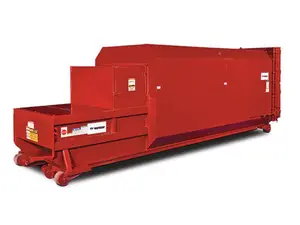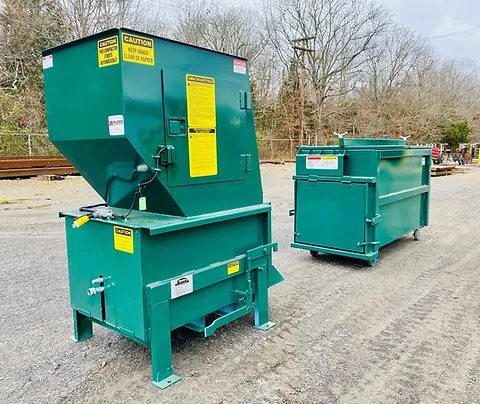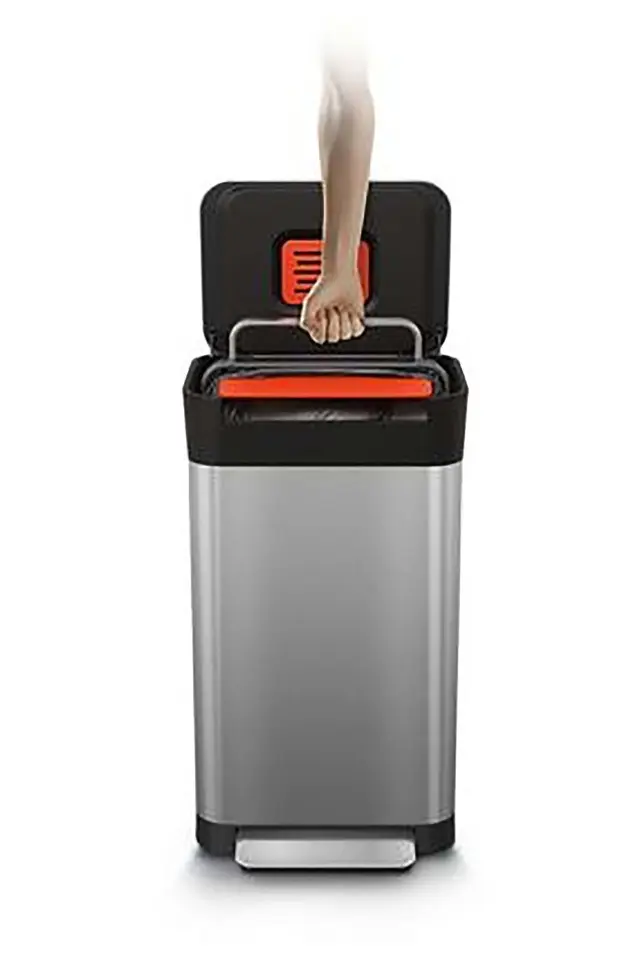Trash Compactors at a Glance: Operation, Maintenance, and More
This article provides a comprehensive overview of trash compactors, highlighting their benefits, operation, types, maintenance, and safety tips. Learn how these handy appliances can save space, reduce environmental impact, and simplify your daily routine while ensuring their proper and safe use.
Everything You Need to Know About Trash Compactors.

Trash compactors are a convenient and efficient appliance for managing household waste. They help reduce the volume of trash, save space, and minimize the frequency of trips to the trash bin.
What is a Trash Compactor?
A trash compactor is a household appliance designed to compress and reduce the volume of household waste. It consists of a motor, a metal ram, and a storage bin. When activated, the compactor's ram presses down on the garbage, effectively compacting it. This process reduces the size of the waste and minimizes the need for frequent disposal.
Benefits of Using a Trash Compactor
1. Space Saving: One of the primary advantages of using a trash compactor is the significant reduction in the volume of trash. This saves valuable kitchen space and reduces the frequency of emptying the trash bin.
2. Environmental Impact: By compacting trash, you reduce the number of garbage bags used, which can have a positive impact on the environment. It reduces the amount of waste sent to landfills and saves on resources like plastic bags.
3. Odor Control: Trash compactors often come with odor-controlling features, such as charcoal filters, to keep unpleasant smells at bay. This is especially beneficial when disposing of organic waste.
4. Convenience: With a trash compactor, you won't need to take out the trash as often, making daily life more convenient and efficient.
How a Trash Compactor Work
Trash compactors operate through a straightforward process:
1. Loading: You place your household waste, including items like food scraps, paper, and plastic, into the trash compactor's storage bin.
2. Compacting: Once the bin is full, you close the compactor's door and activate the motor. The metal ram descends, compressing the trash. Most compactors have a foot pedal or a button to start the process.
3. Ejecting: After the compaction process is complete, you can open the compactor and remove the compacted waste. This compacted trash can be disposed of in your regular garbage bin or bag.
Types of Trash Compactors
There are two main types of trash compactors:
1. Freestanding Trash Compactors: These compactors are standalone units that can be placed anywhere in your kitchen. They offer flexibility in terms of installation.
2. Built-in Trash Compactors: Built-in compactors are designed to be integrated into your kitchen cabinetry. They blend seamlessly with your kitchen design but require a specific installation process.
Maintenance and Safety Tips
To ensure the longevity and safe operation of your trash compactor, consider the following maintenance and safety guidelines:
1. Cleaning: Regularly clean the compactor's interior, storage bin, and the surrounding area to prevent odors and maintain hygiene.
2. Odor Control: Replace charcoal filters as recommended to keep odors in check.
3. Safety Features: Ensure that your compactor has safety features, such as a key switch or lockout control, to prevent accidental operation, especially in households with children.
4. Maintenance Checks: Periodically inspect the compactor for any loose parts, damaged components, or unusual noises. If you notice any issues, contact a qualified technician for repairs.
5. Proper Use: Do not overfill the compactor, and avoid placing hazardous materials or extremely hot items inside. Follow the manufacturer's guidelines for safe operation.
Advantages of Trash Composting
- Environmental Benefits
- Reduction in Landfill Waste: Composting diverts organic waste, such as food scraps and yard trimmings, from ending up in landfills. This reduces the strain on landfill capacity and minimizes methane gas emissions, which are potent greenhouse gases.
- Rich Compost Production: Trash composting yields nutrient-rich compost that can be used to enrich soil quality. This organic material enhances the soil's ability to retain water, reduces the need for chemical fertilizers, and promotes healthier plant growth.
- Reduced Chemical Usage: By using compost in gardening and landscaping, you can decrease the need for synthetic chemicals, pesticides, and herbicides, which can be harmful to the environment.
- Economic Savings
- Less Waste Removal Costs: Composting reduces the volume of trash you send to the curb, resulting in fewer trash bags and disposal fees.
- Lower Fertilizer Expenses: Compost can replace expensive commercial fertilizers, helping you save money on gardening and landscaping.
- Healthier Environment
- Improved Soil Health: Composting enriches the soil, promoting healthier and more vibrant plant growth. It also reduces soil erosion, further benefiting the ecosystem.
- Less Pollution: With reduced use of synthetic chemicals and pesticides, the environment experiences fewer instances of water and air pollution.
Disadvantages of Trash Composting
- Time and Effort
- Learning Curve: Effective composting requires knowledge of proper techniques and maintenance, which may take time to master.
- Regular Maintenance: Compost piles or bins need regular turning, monitoring, and attention to maintain the right conditions for decomposition.
- Space Constraints
- Yard Space: Some composting methods, like traditional compost piles, may require a significant amount of yard space, which can be a constraint for individuals with limited space.
- Attracting Pests
- Pest Concerns: Composting can attract pests like rodents and flies if not properly managed. Using a well-designed composter or bin can mitigate this issue.
- Odor Issues
- Unpleasant Smells: If not managed correctly, compost piles can emit foul odors. Proper layering and maintenance can help reduce or eliminate odors.
- Limited Acceptable Materials
- Restrictions on What to Compost: Trash composters can only process organic waste, excluding materials like plastics, metals, and glass. This limitation means you'll still need traditional waste disposal methods for non-organic waste.

People also ask (FAQ)
Are trash compactors a good idea?
Are trash compactors expensive?
Do trash compactors smell?
What are the three main components of trash compactors?
What are the disadvantages of waste compaction?
How do automatic trash compactors work?
Who manufactures trash compactors?
Which chemical should you use to clean the trash compactor?
1. Are trash compactors a good idea?
Trash compactors are generally considered a good idea for several reasons. They help save space, reduce the frequency of taking out the trash, and can have environmental benefits by reducing the number of garbage bags used. They also help control odors when equipped with appropriate features.
2. Are trash compactors expensive?
The cost of trash compactors can vary depending on the brand, type, and features. Generally, they are more expensive than traditional trash bins but can provide long-term cost savings by reducing the use of garbage bags and improving overall waste management.
3. Do trash compactors smell?
Trash compactors are designed to help control odors. Many models come with odor-controlling features, such as charcoal filters, which absorb and neutralize unpleasant smells. Regular cleaning and maintenance can also help prevent odors.
4. What are the three main components of trash compactors?
The three main components of a trash compactor are the motor, the metal ram, and the storage bin. The motor powers the compaction process, the metal ram compresses the trash, and the storage bin holds the compacted waste.
5. What are the disadvantages of waste compaction?
While trash compactors offer many benefits, there are some disadvantages to consider. These may include the initial cost of the appliance, the need for proper maintenance, and the limited capacity of the storage bin, which may require more frequent emptying.
6. How do automatic trash compactors work?
Automatic trash compactors work by using a motor to activate a metal ram, which presses down on the waste inside the storage bin. When the compaction is complete, the ram returns to its initial position, and the compacted waste can be removed. Some models have sensors that automatically start the compaction process when the bin is full.
7. Who manufactures trash compactors?
Several manufacturers produce trash compactors, including well-known brands like Whirlpool, KitchenAid, GE, Broan, and more. The availability of specific brands may vary depending on your location.
8. Which chemical should you use to clean the trash compactor?
To clean a trash compactor, you can use a mild, non-abrasive cleaner or a solution of warm water and a gentle dish soap. Avoid using harsh chemicals or abrasive materials, as they can damage the compactor's surfaces. Additionally, make sure to follow the manufacturer's cleaning and maintenance recommendations for your specific model.
Trash compactors are a valuable addition to any kitchen, offering convenience, space savings, and environmental benefits. By understanding how they work and following maintenance and safety guidelines, you can enjoy the many advantages of a trash compactor while ensuring its safe and efficient operation.




